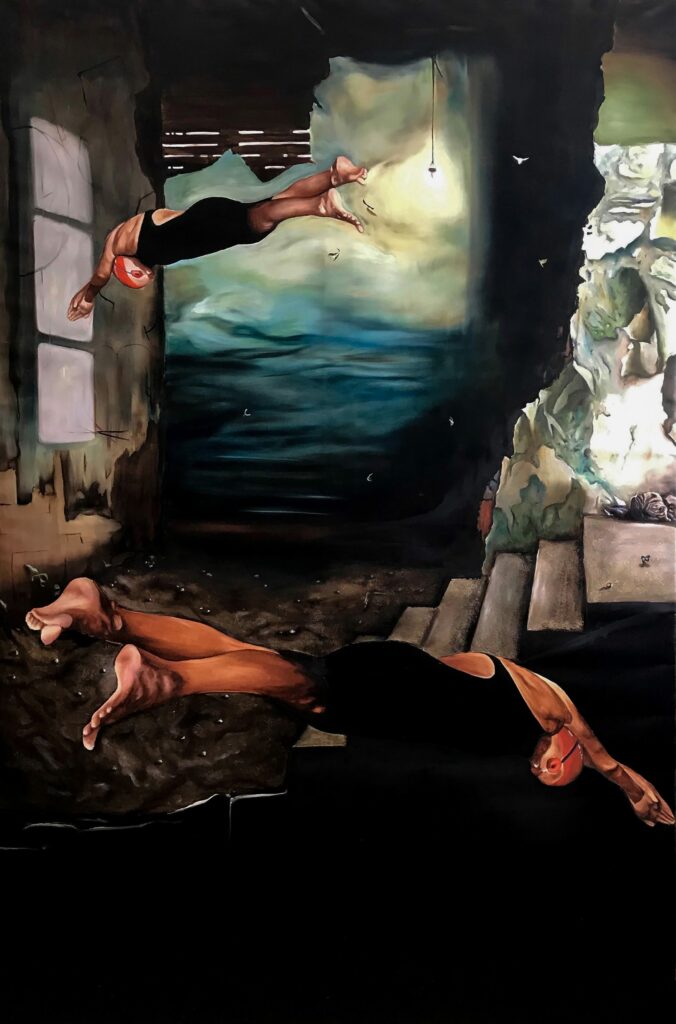Inspired by Nellie Bly’s journalistic report “Ten days in a madhouse “(1887), the painting is an attempt to explore with the imagination the inside of the mind, where the healthy rational and the pathological irrational coexist in every human being. Among the many themes that emerge from the text, I was particularly struck by the aspect of non-listening / indifference: the medical staff of the madhouse in which Nelly Bly had been locked up in order to document the living conditions of the patients was not interested at all in the welfare of the patients, and didn’t take their words into account, always accusing them of madness. Whether by indulging the expected behavior of a madman, or by reasonably trying to make the mistake in the diagnosis understood, for the women locked up the result was always the same: imprisonment, abuse, and finally true madness – induced however by the structure of ‘health care’. The context of the painting is a kind of box, a dilapidated building that recalls the fragile physical and mental constructions behind which we barricade ourselves and which give us the illusion of being able to live cutting out the surrounding world and all its problems. The plunge has a double meaning: that of the “abyss” of the mind – still a mystery today not fully clarified – and the autobiographical one, because it’s me the swimmer diving and having experienced the sensation in the past of having to protect my true self from those who, seeing only the outer skin, tried to convince me that I was no longer in control of my thoughts and wishes.

Deep in my mind
Oil on canvas
222x150cm
2019
Private Collection(ITA)